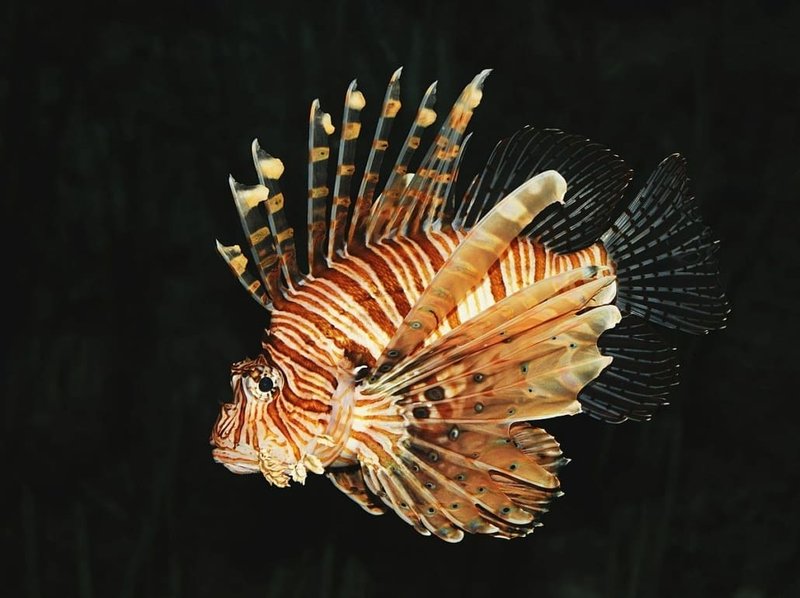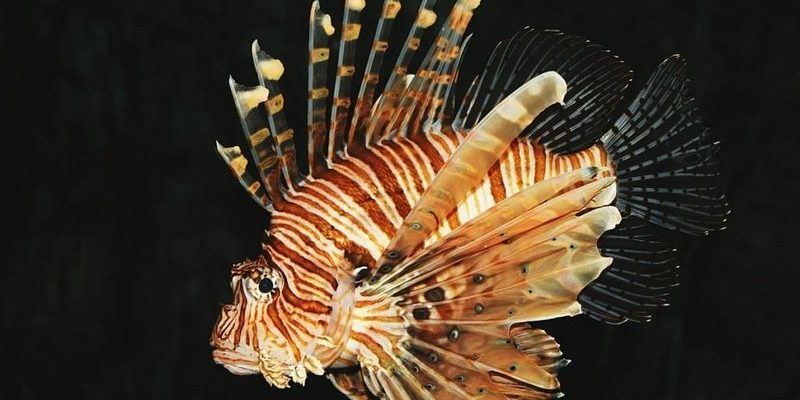
Let’s dive a little deeper into what makes lionfish so unique. Imagine a character in a movie—bold, a little dangerous, and perhaps misunderstood. Lionfish embody that vibe perfectly. As they glide gracefully through the water, they blend a mix of beauty and menace, leaving many to wonder about their behaviors and interactions in their natural habitat.
In this article, we’ll explore lionfish behavior and temperament, looking at their hunting habits, social interactions, and how they cope in their environment. Whether you’re an aquarium enthusiast or just curious about marine life, this breakdown will offer insight into the fascinating world of lionfish.
What Makes Lionfish Unique?
Lionfish, scientifically known as *Pterois*, are easily recognizable by their striking, striped patterns and long, spiny fins. Their elegant appearance is not just for show; these attributes play crucial roles in their survival. The fins, with their venomous spines, act as a defense mechanism against potential predators. Honestly, if you were a fish, would you want to take on a lionfish with all those spikes?
Their unique coloration also serves as a form of camouflage, helping them blend into the coral reefs where they reside. This ability to hide in plain sight is vital for their hunting strategy. So, when you see a lionfish lounging around, remember that it’s not just for relaxation. They’re on the lookout for prey.
Interestingly, lionfish are nocturnal hunters, which means they thrive when the sun sets. They have excellent eyesight that allows them to spot smaller fish at night, making them effective predators. Their hunting style is rather fascinating—like a cat stalking its prey. They move slowly, waiting for the perfect moment to strike with lightning speed.
Hunting Habits and Techniques
Lionfish are known as opportunistic feeders, meaning they’ll eat whatever is available when they feel hungry. Their diet primarily consists of smaller fish and crustaceans, which they ambush. Here’s how it works: they use their fan-like fins to create a visual distraction, drawing the unsuspecting fish closer.
Once the fish is close enough, the lionfish will swiftly dart forward, using its fast reflexes to capture the meal. Their mouths can expand significantly, allowing them to consume prey that’s nearly half their size. Can you imagine that? It’s like a cartoon character swallowing something way too big!
One important aspect of their behavior is their ability to adapt their hunting techniques based on the environment. In areas where prey is abundant, lionfish might be more aggressive. However, in places where food is scarce, they can become more patient and strategic, waiting longer for the right opportunity. That’s some savvy survival strategy, don’t you think?
Social Behavior: Solitary or Social?
When it comes to social interactions, lionfish tend to be solitary creatures. You might think that being alone in the vast ocean could be lonely, but for lionfish, it’s perfectly normal. They have a territory that they defend fiercely. If another lionfish dares to enter their space, you might see a display of aggression. Usually, this involves some posturing, where they spread their fins and show off their spines.
Even though they are mostly solitary, lionfish can occasionally be found in small groups, especially during mating season. The courtship rituals can be quite elaborate. Males often engage in display behaviors, swimming around females while showing off their fins. It’s like a dance, where the lead is all about impressing the audience.
The interactions between lionfish can also tell us a lot about their temperament. They’re generally not aggressive towards other species, but they can be quite territorial with their own. Think of it as having your cozy spot on the couch that you don’t want anyone else to take over!
Adaptations to Their Environment
Lionfish are incredibly adaptable creatures. They’ve made themselves at home in a variety of environments, from shallow reefs to deeper waters. This adaptability is one reason they’ve become so invasive in some areas, particularly in the Caribbean. Their ability to thrive in diverse habitats showcases their resilience.
One key adaptation is their venomous spines. In their native habitats, these spines deter predators, making them less likely to be targeted. Interestingly, their venom isn’t lethal to humans, but it can cause painful stings. Imagine stepping on a cactus—that’s kind of what it’s like! This defensive mechanism allows lionfish to remain at the top of the food chain in their environments.
Furthermore, lionfish can also tolerate a range of salinity levels, which allows them to inhabit different coastal regions. This adaptability has contributed to their spread in non-native areas, leading to ecological imbalances. They’re like the ultimate survivalists of the fish world—able to thrive where others might struggle.
Why Understanding Lionfish Behavior Matters
Understanding lionfish behavior and temperament is crucial for several reasons. First, their role in the ecosystem is significant. As predators, they can impact fish populations, especially in areas where they become invasive. By grasping how they hunt, socialize, and adapt, we can better manage their presence in non-native regions.
Moreover, as aquarium enthusiasts, understanding their behavior helps us create proper habitats for them. Their need for space and territories means we must provide enough room in captivity to mimic their natural conditions. Failing to do so can lead to stress, which can harm their health.
Additionally, recognizing their defensive traits informs us about potential risks when interacting with them. While they may look beautiful, it’s essential to remember that their spines can deliver painful stings. Respecting their space in the wild and understanding their behavior contributes to safer interactions.
Final Thoughts: The Fascinating World of Lionfish
In summary, the behavior and temperament of the lionfish are as intricate as the reefs they inhabit. From their stunning appearance to their clever hunting tactics and solitary nature, lionfish paint a vivid picture of life beneath the waves. They remind us how interconnected and delicate marine ecosystems can be—even the most beautiful creatures can have a fierce side.
So next time you see a lionfish or read about them, think beyond their striking look. Appreciate the complexity of their behavior and the important roles they play in our oceans. Understanding these fascinating fish not only enhances our appreciation of marine life but also deepens our commitment to protecting it. Let’s celebrate the lionfish for what it truly is: a remarkable blend of beauty and survival.

